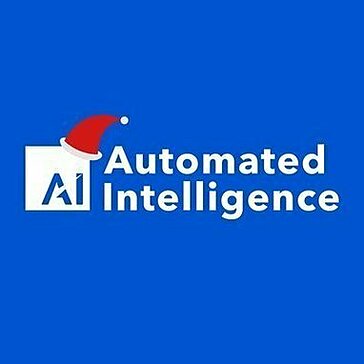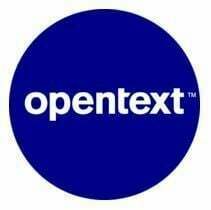4.25
Ardent Data Inventory, Data Identification, and Mapping Review
Explore our Ardent Data Inventory, Data Identification, and Mapping review. Learn about its features, pricing, security, updates, support, and value for money. See if it’s right for you!

Comprehensive overview and target audience
Ardent Data Inventory, Data Identification, and Mapping is primarily designed for organizations grappling with complex data landscapes and stringent regulatory requirements. Its target audience includes data privacy officers, compliance managers, IT security teams, and data governance professionals who need a clear, automated way to understand where their data resides, what kind of data it is, especially sensitive information, and how it flows across systems. Businesses subject to regulations like GDPR, CCPA, HIPAA, and others will find its capabilities particularly relevant for demonstrating compliance and managing data risk effectively. The platform helps move organizations beyond manual spreadsheets and tribal knowledge towards a dynamic, accurate representation of their data assets.
The core strength lies in its integrated approach. The inventory function provides a comprehensive catalog of data sources across the enterprise, connecting to diverse systems like databases, cloud storage, and applications. Following this, the identification module employs sophisticated scanning and classification techniques to pinpoint sensitive data types, such as personal identifiers, financial details, or protected health information, applying relevant tags automatically. Finally, the mapping component visualizes data lineage and processing activities, crucial for tasks like Record of Processing Activities RoPA generation and understanding cross border data transfers. This unified process reduces manual effort significantly and improves accuracy.
Evaluating the Ardent Data Inventory, Data Identification, and Mapping value for money reveals a compelling proposition for teams seeking efficiency and risk mitigation. While a detailed Ardent Data Inventory, Data Identification, and Mapping pricing comparison requires direct engagement with sales, its feature set often positions it competitively against alternatives, especially considering the potential cost of non compliance or data breaches. The platform benefits from regular Ardent Data Inventory, Data Identification, and Mapping updates and new features, ensuring it adapts to evolving privacy laws and technological advancements. Furthermore, robust Ardent Data Inventory, Data Identification, and Mapping security features are built in, safeguarding the sensitive metadata collected through access controls, encryption, and audit trails, which is critical given the nature of the information it handles.
To ensure user success, comprehensive Ardent Data Inventory, Data Identification, and Mapping support and training resources are typically available. These resources often include:
- Detailed product documentation and knowledge base articles.
- Online tutorials and potentially webinar recordings.
- Direct access to support teams for troubleshooting and guidance.
- Sometimes tailored training sessions for enterprise clients.
This commitment to user enablement helps organizations maximize their investment and effectively leverage the platform’s full capabilities for ongoing data governance and compliance management. Prospective users should investigate the specific support tiers offered during their evaluation process.
User experience and functional capabilities
The overall usability appears designed for technical users like data governance professionals although efforts have been made to streamline complex tasks. Ardent Data Inventory, Data Identification, and Mapping user experience insights often highlight the dashboard clarity in visualizing data landscapes once configured. Navigation through inventory, identification rules, and mapping visualizations becomes intuitive after an initial familiarization period. While powerful, the depth of features means new users should expect a learning curve, relying on available documentation and support.
Understanding how to use Ardent Data Inventory, Data Identification, and Mapping involves several core steps. First, users connect the platform to various data sources across the enterprise. Second, they initiate automated scans which use predefined or custom rules to identify and classify data, particularly sensitive types. Third, the system generates maps illustrating data lineage and processing flows. Users interact primarily through the central console to configure scans, review findings, manage classifications, and generate reports like the Record of Processing Activities.
Setting up the system typically follows guidance provided in the Ardent Data Inventory, Data Identification, and Mapping implementation guide or through direct support engagement. The initial configuration, involving connector setup and defining organizational context, is crucial for accurate results. A key strength is integrating Ardent Data Inventory, Data Identification, and Mapping with other tools within the governance, risk, and compliance GRC ecosystem. This often involves API connections or data exports to platforms for security information and event management SIEM, ticketing systems, or broader GRC frameworks, enabling a more holistic view of data risk.
Some common problems with Ardent Data Inventory, Data Identification, and Mapping relate more to the inherent complexity of enterprise data environments than the tool itself. Initial scan durations can be lengthy for large infrastructures, and fine tuning classification rules requires expertise. However, regular Ardent Data Inventory, Data Identification, and Mapping updates and new features aim to address such challenges, enhancing performance, adding connectors, and refining detection algorithms to keep pace with evolving data types and regulations. Staying current with these updates is vital.
To maximize value, adopting certain best practices for Ardent Data Inventory, Data Identification, and Mapping is recommended. These include:
- Starting with a focused scope for initial inventory and scanning, then expanding gradually.
- Regularly reviewing and validating automated classifications to ensure accuracy.
- Leveraging the mapping features proactively for compliance documentation like RoPA.
- Maintaining close collaboration between IT, security, legal, and compliance teams using the platform insights.
- Utilizing the available training resources fully to understand advanced capabilities.
Following these practices helps ensure the platform delivers ongoing visibility and control over organizational data assets effectively.
Who should be using Ardent Data Inventory, Data Identification, and Mapping
Ardent Data Inventory, Data Identification, and Mapping is essential for a specific group of professionals tasked with navigating the complexities of modern data environments. Primarily, this includes Data Privacy Officers DPOs, Compliance Managers, IT Security Teams, and Data Governance Professionals. These roles face increasing pressure to ensure regulatory adherence and protect sensitive information across sprawling digital infrastructures. If your organization handles personal data, financial details, or protected health information, and is subject to regulations like GDPR, CCPA, or HIPAA, this platform is designed for you. It provides the necessary tools to move away from unreliable manual tracking methods towards automated, accurate data intelligence.
Consider a typical Ardent Data Inventory, Data Identification, and Mapping use case scenario: preparing for a GDPR audit. Manually compiling a Record of Processing Activities RoPA is notoriously difficult and error prone. The platform automates the discovery of personal data, identifies where it resides, classifies it, and maps its processing activities, drastically simplifying RoPA generation and demonstrating compliance readiness. Similarly, responding effectively to Data Subject Access Requests DSARs requires knowing exactly where an individual’s data is stored; Ardent facilitates this efficiently.
Beyond specific roles, any organization struggling with data visibility will benefit. If you need to understand your data flows, identify sensitive information across diverse systems like databases, cloud platforms, and applications, or simply gain control over your data assets for better security and decision making, Ardent provides a crucial capability. It’s built for teams who recognize the risks associated with unmanaged data and the inefficiencies of manual discovery. Implementing Best practices for Ardent Data Inventory, Data Identification, and Mapping, such as iterative scanning and cross functional collaboration as mentioned previously, ensures these target users can fully leverage the platform to achieve sustained data governance and risk mitigation success.
Unique Features offered by Ardent Data Inventory, Data Identification, and Mapping
Ardent Data Inventory, Data Identification, and Mapping distinguishes itself through significant customization capabilities and unique integrated features. Users can tailor the platform extensively to match their specific operational context and regulatory landscape. This includes defining custom data classification rules beyond the standard templates, allowing precise identification of proprietary or niche sensitive information critical to the business. Scan scopes and frequencies can also be adjusted, enabling organizations to focus discovery efforts on high risk areas or specific systems initially, then broaden coverage systematically. Reporting outputs, such as those needed for compliance documentation, can often be configured to meet specific internal or external requirements.
These customization options are key when Customizing Ardent Data Inventory, Data Identification, and Mapping for business growth. By adapting the tool’s focus and rules, organizations ensure that the insights generated align directly with strategic priorities, whether that involves securing new types of customer data, expanding into regions with different privacy laws, or optimizing data storage based on value and risk. While the platform excels in complex environments, the ability to scope and tailor scans might offer pathways for smaller entities evaluating Ardent Data Inventory, Data Identification, and Mapping for small businesses, although its core design serves larger scale needs best.
Unique features often center on the platform’s tightly unified workflow. Unlike solutions requiring separate tools, Ardent seamlessly connects the dots from discovering where data sources exist inventory, to understanding what sensitive information they contain identification, and finally visualizing how that data moves and is processed mapping. This integrated approach significantly accelerates tasks like generating Records of Processing Activities and responding to Data Subject Access Requests. Furthermore, Integrating Ardent Data Inventory, Data Identification, and Mapping with other tools is a designed capability. Through APIs or data export functionalities, it can feed enriched data intelligence into broader GRC frameworks, SIEM systems, or workflow automation platforms, amplifying its value within the larger enterprise technology ecosystem.
Pain points that Ardent Data Inventory, Data Identification, and Mapping will help you solve
Organizations today face significant challenges managing their ever growing data landscapes. Without the right tools, understanding and controlling your data can feel overwhelming, leading to inefficiencies, compliance failures, and increased security risks. Ardent Data Inventory, Data Identification, and Mapping directly addresses these critical operational pain points.
If you are struggling with any of the following issues, Ardent provides a targeted solution:
- Lack of comprehensive data visibility: You suspect valuable or sensitive data exists across various systems databases, cloud storage, applications but lack a clear, unified inventory of where it all resides. Ardent automates discovery, creating a complete picture of your data assets.
- Difficulty identifying sensitive or regulated data: Manually sifting through vast data stores to find personal identifiers, financial details, or health information is impractical and prone to error. Ardent’s sophisticated identification engine automatically scans and classifies data, flagging sensitive types accurately.
- Meeting complex compliance demands: Generating accurate Records of Processing Activities RoPA for GDPR, responding efficiently to Data Subject Access Requests DSARs, or proving adherence to CCPA and HIPAA can be a nightmare with manual methods. Ardent automates the mapping of data flows and processing activities, simplifying compliance documentation and response.
- Inefficient, error prone manual processes: Relying on spreadsheets and tribal knowledge for data inventory and mapping is slow, unsustainable, and risky. Ardent replaces these outdated methods with automated, dynamic, and reliable processes.
- Integrating data insights across platforms: Getting data intelligence from a discovery tool into your broader security or governance ecosystem can be difficult. Ardent is designed for this; `Integrating Ardent Data Inventory, Data Identification, and Mapping with other tools` like SIEM or GRC platforms via APIs provides a holistic risk view.
- Scaling data governance with business needs: As your organization grows, maintaining control over increasingly complex data becomes harder. `Customizing Ardent Data Inventory, Data Identification, and Mapping for business growth` allows you to tailor rules, scope, and reports, ensuring governance keeps pace. While often associated with larger enterprises, the flexibility offered makes aspects of `Ardent Data Inventory, Data Identification, and Mapping for different businesses sizes` relevant through careful implementation planning.
By tackling these common frustrations, Ardent empowers your data privacy, security, and governance teams to work more effectively, reduce organizational risk, and make informed decisions based on a clear understanding of your data landscape.
Scalability for business growth
As your business expands, so does the volume, variety, and complexity of your data. Maintaining visibility and control over this growing digital footprint is essential not just for compliance, but for strategic decision making and operational efficiency. Ardent Data Inventory, Data Identification, and Mapping is built with this expansion in mind, offering inherent scalability to support your organization’s trajectory. Its architecture is designed to handle increasing demands, ensuring that data discovery, classification, and mapping processes remain effective even as your infrastructure evolves.
The platform’s ability to connect to a widening array of data sources, from on premises databases to diverse cloud environments and new applications, is fundamental to its scalability. As you onboard new systems or migrate to different platforms, Ardent can adapt, extending its reach to maintain a comprehensive data inventory. Performance is engineered to cope with larger data volumes and more intricate data flows without significant degradation. This ensures that scan times remain manageable and insights are delivered promptly, even across vast enterprise ecosystems.
Effective scalability relies heavily on adaptation. This is where Customizing Ardent Data Inventory, Data Identification, and Mapping for business growth becomes critical. You can refine classification rules to identify new types of sensitive data relevant to emerging business lines or markets. Scan scopes can be adjusted dynamically to focus on integrating newly acquired assets or exploring expanded cloud deployments. Furthermore, Customizing Ardent Data Inventory, Data Identification, and Mapping for business scalability means tailoring reporting and integrations to align with evolving governance structures and compliance obligations across a larger, potentially global, organization. This flexibility ensures the platform grows intelligently alongside your business, providing sustained value and robust data governance capabilities throughout your growth journey.
Final Verdict about Ardent Data Inventory, Data Identification, and Mapping
Ardent Data Inventory, Data Identification, and Mapping presents a robust and integrated solution for organizations grappling with the complexities of modern data governance. It effectively addresses the critical need for visibility into where data resides, what kind of data it is, and how it flows across the enterprise. The platform’s core strength lies in its unified approach: combining automated inventory creation, sophisticated sensitive data identification, and clear data mapping capabilities within a single framework. This significantly reduces reliance on error prone manual processes, offering a more reliable path to understanding and managing data assets.
The software proves particularly valuable for its intended audience: data privacy officers, compliance managers, IT security teams, and data governance professionals. It directly tackles major pain points such as achieving compliance with regulations like GDPR and CCPA, simplifying tasks like RoPA generation and DSAR responses, and mitigating the risks associated with unidentified sensitive data. While the user experience requires an initial investment in learning due to its comprehensive feature set, the clarity provided by its dashboards and visualizations once mastered is a significant advantage. Customization options allow tailoring to specific business needs, and the platform demonstrates strong scalability to grow alongside organizational data demands.
Considering its ability to enhance efficiency, improve accuracy, bolster security posture, and streamline compliance efforts, Ardent Data Inventory, Data Identification, and Mapping offers a compelling value proposition. It moves organizations towards a proactive stance on data management.
The Final verdict on Ardent Data Inventory, Data Identification, and Mapping is overwhelmingly positive for businesses needing comprehensive control over their data landscape. It stands out as a powerful tool capable of transforming complex data environments into manageable, understandable assets. For organizations committed to serious data governance and risk mitigation, Ardent represents a significant step towards achieving sustained compliance and operational intelligence. Its integrated nature makes it a strong contender in the data discovery and mapping market.
Advantage
Disadvantage
Gain complete visibility into all your data assets
Simplify regulatory compliance efforts significantly
Proactively identify and mitigate critical data risks
Improve data management efficiency and reduce overhead
Enable informed decisions with accurately mapped data
Disadvantage
Requires significant technical setup effort
Potentially high implementation and ongoing costs
Steep learning curve for optimal utilization
Needs dedicated resources for effective management
Integration complexity with some legacy systems possible
Rating
Product Support
Web Based
Windows
Mac OS
Linux
Android
iOS
Phone Support
Email/Help Desk
AI Chat Bot
Live Support
24/7 Support
Forum & Community
Knowledge Base
Live Online
Documentation
Videos
In Person
Webinars
Company: OpenText
Email: Not Available
Address:
275 Frank Tompa Dr, Waterloo, ON N2L 0A1, CanadaPhone: +1 (519) 888-7111
Implementation
Web Based
Windows
Mac OS
Linux
Android
iOS
Support
Phone Support
Email/Help Desk
AI Chat Bot
Live Support
24/7 Support
Forum & Community
Knowledge Base
Training
Live Online
Documentation
Videos
In Person
Webinars
Group text
Company: OpenText
Email: Not Available
Address:
275 Frank Tompa Dr, Waterloo, ON N2L 0A1, Canada
Phone: +1 (519) 888-7111
Alternative Products
Frequently Asked Questions
Is Ardent Data Inventory, Data Identification, and Mapping worth it?
Absolutely, Ardent delivers significant value if you’re grappling with understanding your data landscape, managing compliance risks, or streamlining data governance; it automates complex, error-prone manual tasks, saving considerable time and resources while providing crucial visibility.
How can Ardent Data Inventory, Data Identification, and Mapping help me?
Ardent helps by automatically discovering, identifying, and classifying data across your diverse systems, creating a centralized inventory and mapping data flows, which is essential for robust data governance, meeting privacy regulations (like GDPR/CCPA), enhancing data security, and enabling more informed data strategy decisions.
What types of data sources does Ardent scan and map?
Ardent is designed to scan and map a wide array of data sources, including structured databases (SQL, NoSQL), data warehouses (e.g., Snowflake, Redshift, BigQuery), data lakes, cloud storage (AWS S3, Azure Blob, Google Cloud Storage), file systems, and potentially various SaaS applications, covering both on-premise and cloud environments.
How accurate is Ardent's automated data identification and classification?
Ardent leverages advanced algorithms, often incorporating machine learning and sophisticated pattern matching, to achieve high accuracy in automated data identification and classification, though results can typically be reviewed and fine-tuned by users for specific contextual needs.
Does Ardent assist with data privacy compliance like GDPR or CCPA?
Yes, Ardent directly assists with data privacy compliance by helping you locate, classify, and map personal and sensitive information, which is fundamental for addressing GDPR, CCPA, and other regulatory requirements like fulfilling Data Subject Access Requests (DSARs) and maintaining Records of Processing Activities (RoPA).
How easy is it to set up and manage the Ardent platform?
Ardent typically focuses on user-friendliness, offering an intuitive interface and guided processes for setup and configuration, aiming to simplify the connection to data sources and day-to-day management for both technical and business users, though the initial setup complexity can vary based on your environment’s scale.
Can Ardent visualize data flows and relationships across systems?
Yes, a core capability of Ardent is visualizing data flows and relationships; it generates clear, often interactive maps illustrating data lineage – how data moves, transforms, and is used across different systems – providing critical insights into data dependencies and impact analysis.
What makes Ardent different from other data inventory and mapping tools?
Ardent often differentiates itself through a combination of its breadth of data source connectivity, the sophistication and accuracy of its AI-powered automated classification engine, its intuitive visualization of complex data lineage, and its specific features tailored to streamline privacy compliance tasks, offering a holistic view often more integrated than point solutions.





